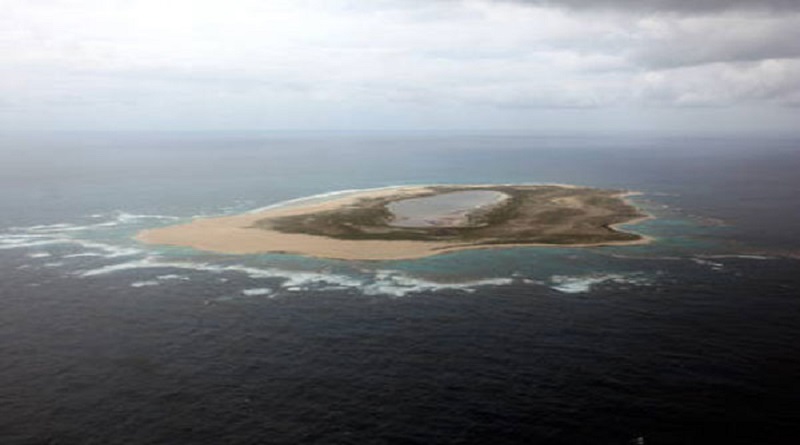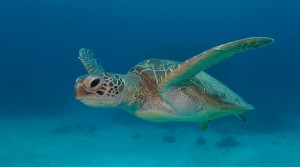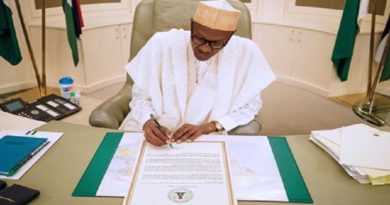UNESCO applauds Obama for creating world’s largest protected marine area
For demonstrating his  determination to protect the environment, the United Nations Educational, Scientific and Cultural Organisation (UNESCO) has commended United States President, Barack Obama, for creating the largest nature reserve in the world, done through expanding a marine reserve in state of Hawaii.
Obama had on Friday August 26, 2016 announced the expansion of the Northwestern Hawaiian Islands Marine National Monument, also known as PapahÄnaumokuÄkea, creating the world’s largest protected marine area. It is a World Heritage site encompassing ocean, ten islands and atolls, and is renowned for both its biological and cultural significance.
“This decision is a powerful symbol of determination to protect the environment. It is a way to strengthen the resilience of societies threatened by climate change, to understand and protect the natural ecosystems on which our lives depend,†UNESCO’s Director-General, Irina Bokova, said in a news release today.
Located roughly 250 kilometres northwest of the main Hawaiian archipelago, the marine reserve Papahanaumokuakea was inscribed on the World Heritage List in 2010 for its rich biodiversity, considered to be unparalleled in the world. The archipelago is home to more than a fifth of known fish species.
The marine reserve has now been quadrupled in size, and the expansion comes just days before the opening of International Union for Conservation of Nature and Natural Resources’ (IUCN) World Conservation Congress, also taking place in Hawaii.
The endangered green turtle is among the 7,000 species of marine and terrestrial life found in PapahÄnaumokuÄkea.Xanthe Rivett/Getty Images
“This is a strong reminder of the fundamental role of the ocean, its fauna and flora, to life on earth, just days before the opening of IUCN Congress on 1 September, in Honolulu,†Ms. Bokova said. “I see this as a call to the international community to commit fully to sustainable development and the implementation of the Paris Climate Agreement adopted in 2015.â€
According to UNESCO, the Papahanaumokuakea reserve also has deep cultural significance. The Hawaiian people view the site as the embodiment of the concept of kinship between people and the natural world, and as the place where it is believed that life originates and to where spirits return after death.
The marine reserve also includes archaeological remains related to settlement and land use in pre-European times, and it stretches almost 2,000 kilometres from its southeast to its northwest limits.
Obama has turned this marine reserve into the largest protected area in the world
The reserve, home to 7,000 different species, is renowned for its natural wonders, as well as being culturally significant to Hawaiians.
“Expanding PapahÄnaumokuÄkea makes a definitive statement about Hawaii’s and the United States’ commitment to ocean conservation,” said Senator Brian Schatz. “By adopting my proposal to expand the monument, President Obama has created a safe zone that will replenish stocks of tuna, promote biodiversity, and fight climate change, and he has given Native Hawaiians a greater voice in managing this precious resource.”
“President Obama’s declaration is only the beginning. To create continuing success, we will need to work together to maintain and grow the partnerships that made the expansion possible in the first place,” the senator added.
In a move that has been hailed by the scientific community, the expansion will see the area grow by more than 442,760 square miles to 582,578 square miles – an area larger than Peru. It was President George W. Bush who designated the islands and surrounding waters a national marine monument in 2006, the first time a large tract of ocean had been protected in the US. It was the largest marine reserve in the world at the time, before other, larger zones were created around the world. Now PapahÄnaumokuÄkea can reclaim its title, after inspiring an international movement to protect ocean regions.
Through petitions, public meetings and other events, Hawaiians were especially supportive of the expansion, especially the Native community who proposed the idea to the White House in January. PapahÄnaumokuÄkea is a place of great significance and honour for Native Hawaiians as it is believed to be the root of ancestral connections to the gods, as well as the site where the spirits of the dead return.
“PapahÄnaumokuÄkea is critically important to Native Hawaiian culture – it is our ancestral place, the birthplace of all life,” said Sol KahoÊ»ohalahala, a Native Hawaiian and a member of the Northwestern Hawaiian Islands Native Hawaiian Cultural Working Group. “The expanded monument will serve as a conservation, climate and cultural refuge for my granddaughter and future generations.”
Aside from the cultural aspects, the reserve is significant for a number of reasons. Large areas of it have yet to be fully explored but scientists know it is home to at least 7,000 different species, around a quarter of which are endemic to the area – meaning they can be found nowhere else on Earth. These include rare and threatened species such as green turtles, Hawaiian monk seals and false killer whales. The monument is also famous for its seabirds given that it is home to 22 different species, numbering some 14 million birds PapahÄnaumokuÄkea is also a hotbed for finding new species. Just this year, three new types of fish were identified, as well as a ghostlike octopus, nicknamed ‘Casper’ by scientists.





